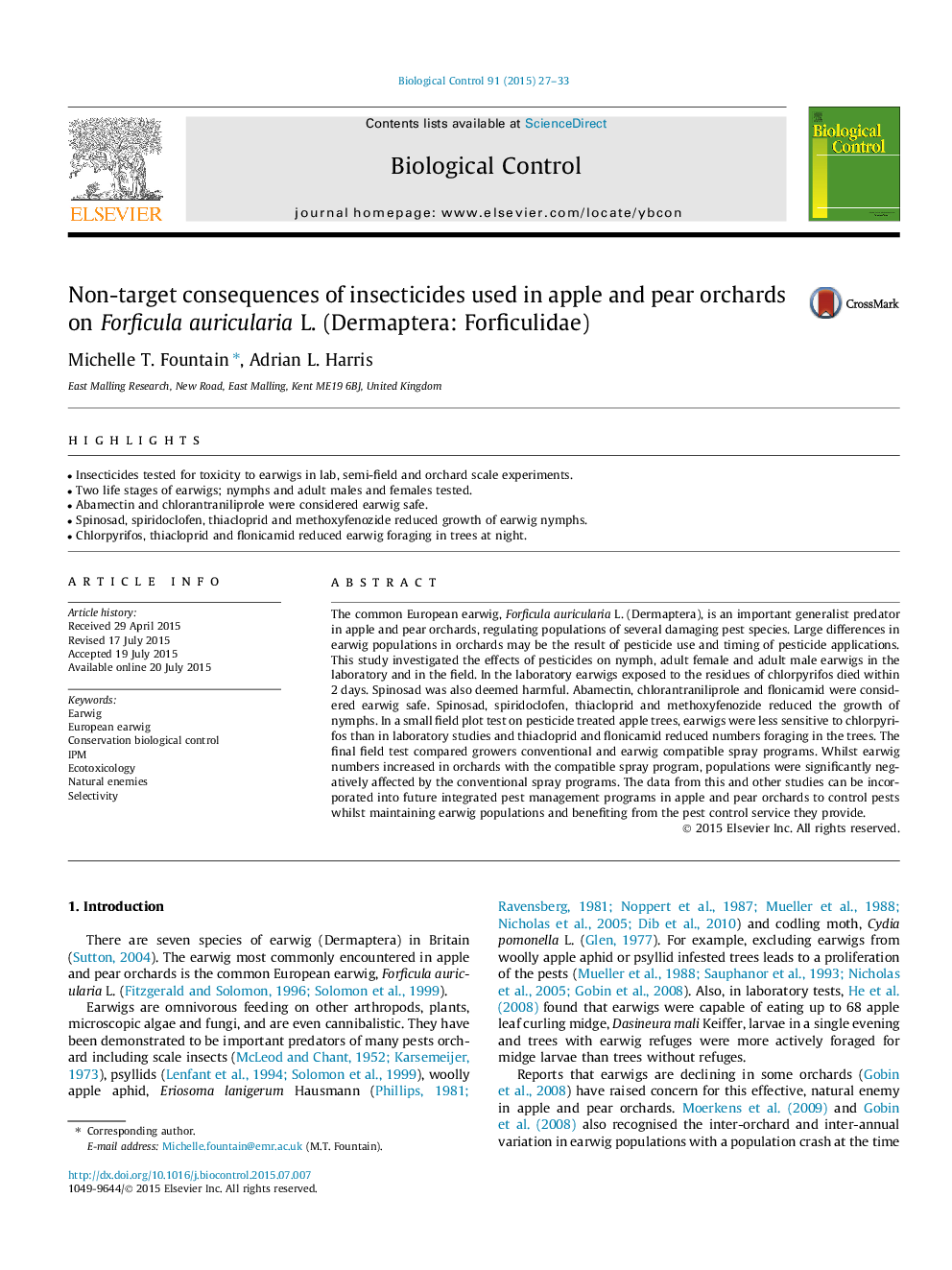| Article ID | Journal | Published Year | Pages | File Type |
|---|---|---|---|---|
| 6372475 | Biological Control | 2015 | 7 Pages |
Abstract
The common European earwig, Forficula auricularia L. (Dermaptera), is an important generalist predator in apple and pear orchards, regulating populations of several damaging pest species. Large differences in earwig populations in orchards may be the result of pesticide use and timing of pesticide applications. This study investigated the effects of pesticides on nymph, adult female and adult male earwigs in the laboratory and in the field. In the laboratory earwigs exposed to the residues of chlorpyrifos died within 2Â days. Spinosad was also deemed harmful. Abamectin, chlorantraniliprole and flonicamid were considered earwig safe. Spinosad, spiridoclofen, thiacloprid and methoxyfenozide reduced the growth of nymphs. In a small field plot test on pesticide treated apple trees, earwigs were less sensitive to chlorpyrifos than in laboratory studies and thiacloprid and flonicamid reduced numbers foraging in the trees. The final field test compared growers conventional and earwig compatible spray programs. Whilst earwig numbers increased in orchards with the compatible spray program, populations were significantly negatively affected by the conventional spray programs. The data from this and other studies can be incorporated into future integrated pest management programs in apple and pear orchards to control pests whilst maintaining earwig populations and benefiting from the pest control service they provide.
Related Topics
Life Sciences
Agricultural and Biological Sciences
Agronomy and Crop Science
Authors
Michelle T. Fountain, Adrian L. Harris,
